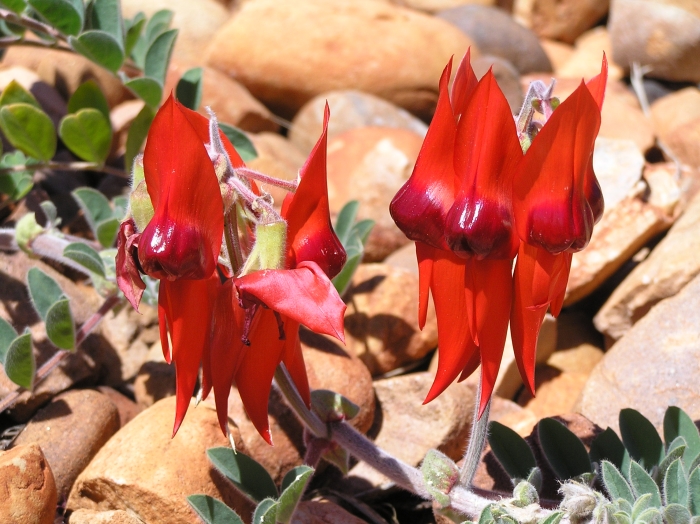Sturt’s Desert Pea
(Swainsona formosa)
Sturt’s Desert Pea (Swainsona formosa)
/
/

BluedayatEnglish Wikipedia
Public domain















































Estimated Native Range
Summary
Sturt’s Desert Pea is celebrated for its striking flowers, which make it a popular choice for cultivation in rockeries, native gardens, and as a container plant. It requires full sun exposure to thrive and prefers soils with excellent drainage, as it is adapted to arid conditions. While it can tolerate medium amounts of water, overwatering or poor drainage can be detrimental. In cultivation, it is important to protect it from frost and to use a low-phosphorus fertilizer to avoid damaging the sensitive roots. Due to its unique and showy flowers, it is often used in floral arrangements and as a feature plant in xeriscapes. However, it can be susceptible to fungal diseases if conditions are too humid or wet.CC BY-SA 4.0
Plant Description
- Plant Type:
- Height: 1.5-2 feet
- Width: 3-9 feet
- Growth Rate: Moderate
- Flower Color: Pink, Red
- Flowering Season: Spring, Summer
- Leaf Retention: Deciduous
Growth Requirements
- Sun: Full Sun
- Water: Low
- Drainage: Fast, Medium
Common Uses
Bee Garden, Bird Garden, Drought Tolerant, Edible*Disclaimer: Easyscape's listed plant edibility is for informational use. Always verify the safety and proper identification of any plant before consumption., Low Maintenance, Potted Plant, Showy Flowers
Natural Habitat
Native to arid regions and semi-arid inland areas of Australia, particularly found in open plains, arid woodlands, and scrublands
Other Names
Common Names: Glory Pea, Lobster Claw, Desert Pea
Scientific Names: , Clianthus formosus, Swainsona formosa, Clianthus dampieri, Clianthus speciosus, Willdampia formosa, Swainsona atrococcinea, Clianthus dampieri var. flore-albo, Clianthus dampieri var. marginatus, Clianthus dampieri var. tricolor
GBIF Accepted Name: Swainsona formosa (G.Don) Joy Thomps.